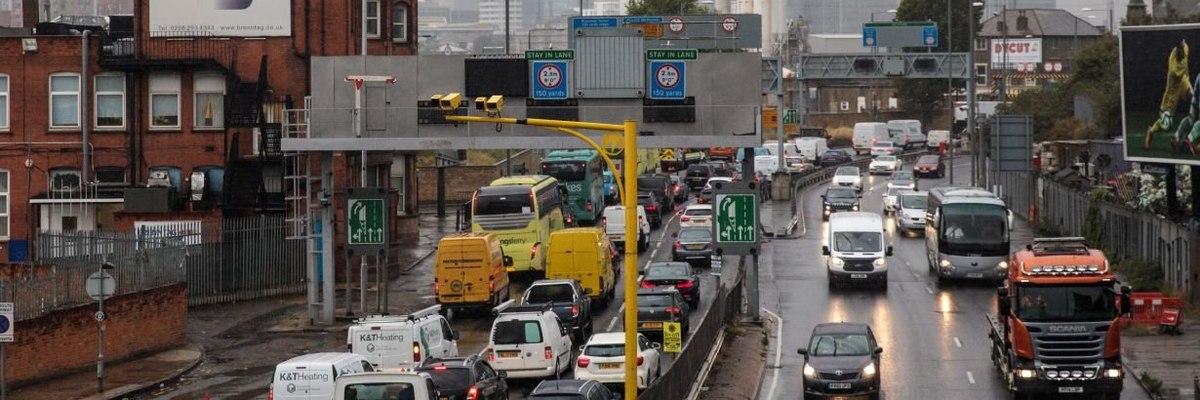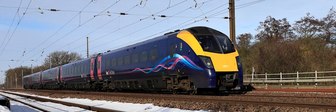It’s just possible you will notice a touch of smugness creeping into what follows. That’s because, as I write, my car is parked outside my home in London and nobody has set foot in it for two or three months. I cycle or use the Tube. So I do not pollute the streets with my exhaust fumes or add to the CO2 in the atmosphere which threatens the very existence of our planet. But, having boasted of my virtue, let me now confess. The main reason I don’t use my car is because it’s so old I have to pay a fee for every day I so much as drive it out of my square. In other words, the GLC’s policy of penalising owners of the most polluting cars has succeeded. And this, of course, is not the only measure being introduced in towns and cities across the land to cut congestion and pollution caused by drivers. Far from it. The big question is whether they are working and, if not, is it our fault or theirs?
One indisputable fact is that although there has been a slight drop over the last decade or so in the number of us who own our own cars, the number of miles driven on minor roads in a big city has increased – almost doubled in the case of London. That’s owing to a combination of satnav apps, Uber-type cabs and more home deliveries. Hence the various schemes to try to keep us out of the driving seat.
One of the most controversial has been the introduction of ‘low traffic neighbourhoods’ or LTNs. The principle behind them seemed eminently sensible: to stop drivers using what we’ve come to know as rat-runs. Councils across London began installing bollards, gates and flower tubs to block off residential streets to the many drivers who reckoned they could cut a few minutes off their daily commute by taking short cuts. They reckoned it would be win-win. Cars and taxis would be forced back onto the main roads and residents would once again be able to enjoy the benefits of quiet neighbourhoods. Their streets would be safer for their children to walk and play. Cycling would be a pleasure rather than a risky business. Above all, pollution which causes so much harm to health and the environment would be sharply reduced and so would carbon emissions.
Yes, of course many motorists would get cross. Driving to work would take longer because they’d be sitting in even bigger traffic jams on the main roads rather than nipping through the back streets, but that was seen by many planners as a price very well worth paying. Indeed, that was regarded by many as the long-term objective. So many motorists would become so frustrated at sitting in ever longer traffic jams that they would find another way of getting to work. They might use public transport or take advantage of the many new cycle routes that had been installed at such great expense and which, themselves, were contributing to congestion by narrowing the width of main roads.
It would be a win-win for the environment and the residents of once pleasant neighbourhoods.
But obviously it has come at a cost. More than £300 million has been spent so far on grants to councils in London alone to reroute traffic away from residential streets. Many small businesses have complained that they have lost customers who have not been able to drive down their streets. People living in poorer neighbourhoods closer to main roads say they have suffered much greater inconvenience than those living in the wealthy suburbs. One argument is that all this is a relatively small price to pay in pursuit of the real goal: reductions in carbon emissions, improved air quality and crippling traffic jams because we’re leaving our cars at home.
Whether those desirable goals have indeed being achieved is disputed. An investigation by The Times has found that ‘many of the trumpeted advantages are illusory.’ Traffic did not go down in the 10 London boroughs that introduced LTNs in 2020. That, of course, was at the height of the covid pandemic when the roads were almost deserted. The question was what would happen after the lockdowns. The investigation found that in those ten boroughs it rose by an average of 11.4 per cent. This is because the LTNs force motorists to take longer routes to get around the new barriers.
By contrast, the two inner London boroughs that did not implement the scheme saw a rebound of only 8.9 per cent. The Times concedes that those figures do not prove the LTNs are causing the extra miles, but thy ‘suggest the schemes may not be as green as their promoters suggest: cars caught in jams or having to take longer journeys emit thousands of tonnes more carbon dioxide.’
It concludes: ‘One result of introducing LTNs with scant consultation is that little thought has been given to access by emergency service vehicles or to the added pollution affecting schools situated on main roads. Instead, the emphasis has been on how much cycling would be encouraged with safer roads and new cycle lanes. This does not depend on LTNs. Cycle lanes are being successfully introduced without the need to fence off neighbourhoods. Cyclists can, and should, be encouraged — but will hardly be attracted to main roads now choked with fumes and traffic… Councils should listen to the complaints and rethink hastily imposed schemes. Some roads should be unblocked; some barriers should stay. Not all motorists are rich and selfish; and closing streets is not the only or best way to cut carbon emissions in our cities.’
A report by the Centre for London think tank reaches a rather different conclusion. It claims LTNs do reduce car use. They also boost cycling and make roads safer. But, it says, councils could do more to make the schemes more palatable and comprehensible to local people. The fact that many were implemented on a trial basis during lockdown meant there was sometimes a lack of consultation, as well as teething troubles that could have been avoided. Even so, its own research shows that data collated from 10 schemes found that cycle use rose by between 31% and 172%, while car traffic fell by between 22% and 76%. There was also strong evidence they reduced road casualties. As for the criticism that they simply push car use to the periphery, to busier main roads, they found that car use mostly fell slightly.
Their conclusion was that LTNS are broadly a good thing and are here to stay – but other measures are needed too – including more cycle lanes and road pricing. If we want to drive on certain roads at certain times we should pay for the privilege. LTNs are not restricted to London. Other cities that have them include York, Bath, Sheffield, and Manchester. In Cambridge the council is considering a £5 charge for those who want to drive their car into the city centre and in Oxford there are new proposals to divide the city into zones — with strict rules limiting the number of times drivers can leave their neighbourhoods in their cars..
All of these schemes are controversial. In Dulwich the council asked residents what they thought of their LTNs and two-thirds wanted them scrapped . A thousand people staged a protest against them.
As for the councils themselves, there is a positive incentive for keeping the various schemes. In Southwark officials issued more than £8 million in fines for offences recorded by only five cameras in Dulwich between January and December 2021. The Oxford scheme would mean drivers would be banned at peak times on six cars banned from driving without a permit at peak times on six major roads across the city. Permits cost cash.
So it seems that, in one form or another, we shall need either a great deal of patience or a fat wallet – or both - if we persist in driving our cars in city centres. What are your thoughts on that? Do you accept that something has to be done for the sake of cleaner air in our cities and less CO2 emitted into the atmosphere? If so, what sort of scheme is the fairest? Or do you believe that motorists are always being painted as the villains and already pay through the nose even when they have no choice but to get behind the wheel?
And are you personally prepared to buy a bike… and use it?
Let us know.








